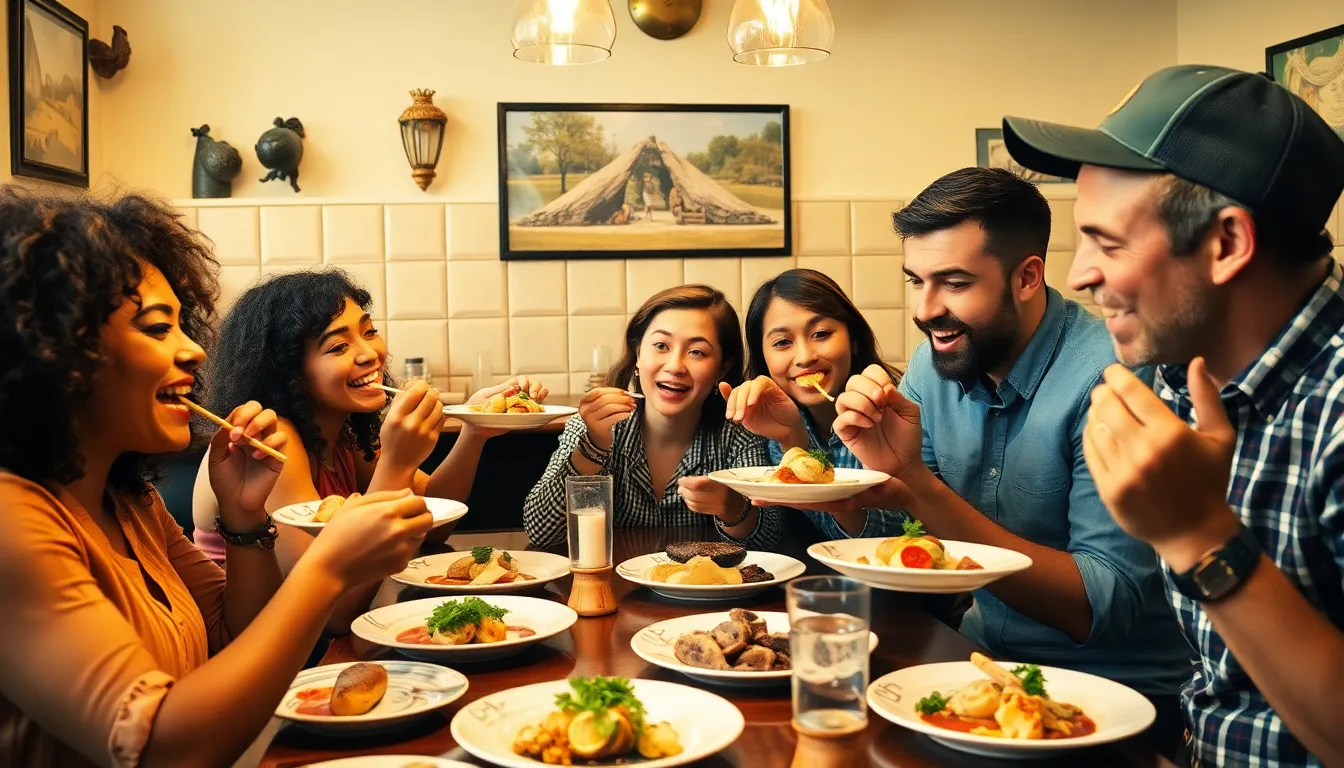In a world where culinary adventures await at every corner, food reviews are the trusty guides that help navigate the delicious chaos. Whether it’s a hidden gem serving up mouthwatering tacos or a trendy café with Instagram-worthy avocado toast, these reviews bring the scoop straight to hungry diners.
Understanding Food Reviews
Food reviews serve as essential tools for explorers within the culinary world. They not only inform diners about flavors, textures, and presentations but also highlight unique dining experiences.
The Importance of Food Reviews
Food reviews guide consumers in their dining choices. They help individuals identify quality restaurants and dishes that match their preferences. Honest critiques can elevate lesser-known eateries, allowing them to gain visibility. Data shows that 84% of consumers trust online reviews as much as personal recommendations, underscoring their impact on dining decisions. Positive feedback fosters restaurant reputation, while negative insights encourage improvement in service and menu offerings.
Different Types of Food Reviews
Food reviews vary greatly in format and style. Written reviews provide detailed evaluations of individual dishes, ambiance, and service. Video reviews offer visual representations, showcasing the dining experience and helping viewers assess meals in real time. Social media posts allow quick snapshots of favorite dishes, accompanied by immediate reactions. Influencers often blend these styles, creating engaging narratives around their dining adventures. Each format caters to a different audience, enhancing food exploration and community engagement.
How to Write an Engaging Food Review

Crafting an engaging food review requires attention to detail and a genuine voice. Reviews should resonate with readers, guiding them toward exciting culinary experiences.
Key Elements to Include
Descriptive titles grab attention. Readers find clarity in straightforward, inviting language. Provide dish names, restaurant locations, and prices to facilitate informed choices. Taste profiles highlight flavors, while textures bring dishes to life. Mention presentation aspects, as visuals influence diners. Include personal impressions, adding authenticity, and showcase service quality, as it impacts overall dining experiences. Conclude with a recommendation or star rating to summarize opinions.
Tips for Descriptive Writing
Use sensory language to evoke taste, smell, and appearance. Begin descriptions with action verbs to create vivid imagery. Capture details like spice levels or freshness to inform readers. Focus on individual ingredients, giving insights into each dish. Maintain a balanced tone, mixing facts with personal experiences to create relatability. Vary sentence structures to keep engagement high. Consider the target audience’s preferences for relatable content, ensuring the review meets their expectations.
Popular Platforms for Food Reviews
Food reviews thrive across various digital platforms, allowing diners to share their culinary experiences with a broader audience. These platforms enhance the discovery and enjoyment of food.
Social Media and Food Blogging
Social media serves as a primary platform for food reviews, with Instagram, Facebook, and TikTok leading the way. Influencers showcase vibrant food visuals, making it easier for users to learn about trends and local favorites. Blogs complement this by offering in-depth discussions, personal stories, and detailed evaluations, which enrich readers’ understanding. Engaging content keeps followers coming back, highlighting unique dishes and restaurants. Twitter also plays a role, with concise reviews and quick recommendations. These platforms facilitate the exchange of tips among diners, promoting culinary adventures.
Apps and Websites for Food Ratings
Apps and websites dedicated to food ratings provide extensive databases for restaurant reviews. Yelp and TripAdvisor dominate this space, offering comprehensive user-generated content, including photos, ratings, and commentary. Zomato and Google Maps also contribute, allowing diners to find local eateries based on user feedback. Each platform incorporates search filters, making it simple to locate specific cuisines, price ranges, and popularity levels. On these sites, verification processes typically ensure the authenticity of reviews. Moreover, integrated features help users interact by sharing their own dining experiences, thereby building a community of food enthusiasts.
Analyzing a Successful Food Review
Food reviews combine passion for cuisine with informative storytelling. Understanding how to craft a compelling food review requires examining key elements that resonate with readers.
Case Studies of Influential Food Reviews
Influential food reviews often showcase unique perspectives. For instance, a review highlighting a hidden taco spot can draw attention to its authentic flavors and welcoming ambiance. Another example includes a viral review of a trendy café, emphasizing the artistic presentation of avocado toast. These reviews often gain traction through social media, where visuals amplify their impact. Additionally, they inspire others to explore new dining experiences, shaping diners’ choices across diverse culinary landscapes.
What Makes a Review Stand Out
Standout reviews captivate readers through sensory detail. Descriptions of flavors, textures, and aromas create vivid imagery in a reader’s mind. Engaging language and varied sentence structures maintain interest, while concise formatting enhances readability. Including specific information such as dish names, prices, and restaurant locations provides context. Authentic voice and passion for food contribute to relatability. By prioritizing reader engagement, these reviews effectively guide food enthusiasts toward new culinary adventures.
Food reviews play a crucial role in shaping dining experiences and culinary exploration. They not only inform diners about flavors and textures but also help uncover hidden gems and trendy spots. Engaging reviews resonate with readers and encourage them to embark on new gastronomic adventures.
As the digital landscape evolves food reviews continue to thrive across various platforms. Whether through vivid blog posts or eye-catching social media snapshots these reviews foster a community of food lovers eager to share their experiences. By prioritizing authenticity and detail reviewers can inspire others to discover the diverse and exciting world of cuisine waiting to be explored.





